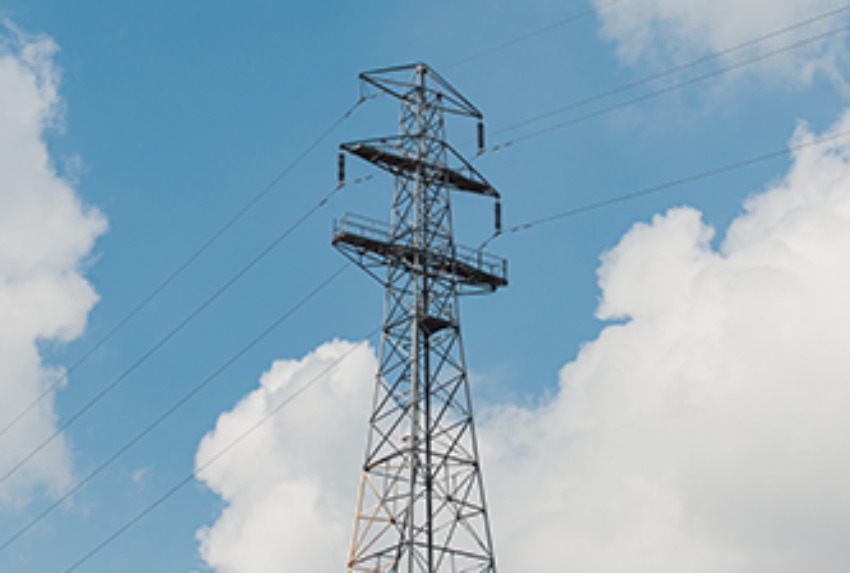AG INSIGHT | 25/07/2017
M&S Plan A 2025: an all-round approach to sustainable business

Mike Barry, Director of Sustainable Business (Plan A) at Marks and Spencer, discusses the ins and outs of M&S’ Plan A 2025
M&S, like many large corporates, has a significant, multi-year, multi-commitment sustainability programme in place. Plan A is now 10 years old and has seen us deliver 296 social and environmental commitments (and not achieve 21!); receive 240 awards; and saved us £750m. But, whilst we can pause momentarily to salute the past, our total focus is really on a challenging but exciting future.
We feel and see the sheer pace of economic, social and environmental disruption that’s happening around us. It’s increasingly clear that our customers are seeing it too. New technologies, unexpected political outcomes, social division, austerity and extreme weather events are a few examples of the change that swirls around us all.
We have recently updated Plan A 2025 to face into this complex future. Crucially, we can see a ‘tipping point’ emerging where the traditional corporate focus on environmental and social issues, of being ‘less bad’, is being replaced by an uncertain, but inevitable, pathway to being a ‘better’ business in all that we do.
1. Achieving scale is vital and mass engagement of people is the key to scale
Most companies’ sustainability plans have played out so far in an arena populated by a small number of professional stakeholders, internally and externally. Action on chemicals, investment in fridges, and changes to sourcing strategies have all been and continue to be challenging. But the ‘actors’ involved, whether NGOs, policy makers or business leaders, speak the same ‘professional’ economic and scientific language as you. Decisions and compromises, however difficult, are made in isolation by a specialist Environment Ministry or CSR Department.
This approach has not been without its successes. Let’s be generous and say it’s helped the economy and society become ‘20% sustainable’. But there we have stalled because such is the scale of the environmental, social, technological, economic and political ructions shaking the world that a few individual laws, taxes, standards, campaigns and corporate plans are simply not enough.
Today we all need to be focused on a single word, scale. How do we ensure every building, factory, store, product, school, hospital, car, phone, plane is sustainable? Bring in a law you might say. Well maybe, but will it really happen and would it really shift our way of life? It might get the flywheel turning but certainly not spinning freely! Instead, we need to reach out to people – as citizens, consumers, voters, tax payers, employees and neighbours to help them recognise collectively that we need to change, that this is possible, and that by changing we can have a better life.
So the core focus of Plan A 2025 is engagement, with our customers and colleagues. From our TV brand advertising (Spend it Well) and participation in the community, to store windows and websites, our loyalty card and our products, we are committed to drawing the whole M&S ‘family’ into the world of Plan A.
So, whilst Plan A remains an ambitious 100 point sustainability plan, it’s structured now around three big pillars that everyone can remember and take part in. We will:
– Help 10 million people live a happier and healthier life
– Help transform 1000 communities
– Be a zero waste business
2. To achieve mass engagement we need to make Plan A 2025 local and personal
How do we drive mass engagement in sustainability? Our research tells us that 80% of our customers share some concern about the future, ranging from 10% who are ‘deep green’ through 35% ‘light green’ to 35% ‘I’ll do something if everyone else does’. The ‘deep greens’ (perhaps most readers of this blog) are passionately connected to the macro sustainability debate (human rights, climate change, oceans and forests) but the vast majority of the rest take a much more ‘micro’ view: what does sustainability mean for me, my family and my community.
So Plan A 2025 is focused on M&S becoming much more ‘local’ by putting each of our 1000 UK stores at the heart of the unique and varied communities they serve and asking each community what we can do to help to break down barriers to employment, donate surplus food, collect used clothing, offer space and volunteer skills. On its own, each store’s contribution is quite small, but ‘laddered up’ across 1000 communities it becomes much bigger, especially when taking into account our 450 stores overseas and the 1000s of communities in our supply chain.
We are using our Sparks reward card to connect 6 million of our customers to the difference their local store is making in their community. In early June, every M&S store stepped out into its local community in a concerted effort to make a difference to them, something we’ll do again next year.
At its heart, M&S is a business grounded in personal and community engagement and it is here where we have started on our path to sustainability.
3. Mass engagement is the pathway to sustainable business models
Finally, a word about why this engagement, localisation and personalisation are so important. The endpoint is simple (in essence if not the detail!): to pivot the way we consume today onto a fundamentally more sustainable pathway, one that is circular, low carbon and restorative; committed to wellbeing, fairness and equality.
We have structured Plan A 2025 to accelerate our journey to this endpoint by:
– Making sustainability a way of working in all we do – all the factories that supply us with food are on a systemic journey to improve their sustainability. Factories attaining at least a silver ranking are rewarded with more sales. Now, our clothing, home and property suppliers will join this journey. Today, we have a goal that all the 3 billion items we sell must have a Plan A attribute by 2020 (currently 79%). We are now extending this to multiple material attributes per product by 2025. In addition, our top 50 raw materials (at least 80% of the volume used across the 35,000 products we sell) must come from sustainable sources by 2025. We are also encouraging the payment of a living wage across our first tier suppliers and franchise partners.
– Joining the dots – in 2007 the original Plan A had 29 bold but quite separate climate change commitments. Today, Plan A 2025 has a Science Based target that brings together all our climate action initiatives across our whole value chain. Likewise, our overarching goal on resource use is to be a zero waste, circular business joining together all our many waste related commitments, again across our whole value chain.
– Building partnerships – we are working with competitors and peers (Tesco, Walmart, Coca Cola, Nestle, Unilever etc) at the Consumer Goods Forum (CGF) to jointly tackle deforestation, forced labour and food waste and partnering with Oxfam to understand how our sourcing decisions impact human rights.
– Being very much more transparent – we have already published an interactive map with the names of all the factories in the world that supply us with food, clothing, home and beauty products. We expect to use the technology revolution to deepen this insight on our supply chains for stakeholders and to tell a richer story to our customers about our product.
– Innovating harder – in 10 communities across the UK, we are piloting new approaches to understand the potential of our stores to play a transformative role in the communities they serve. We are looking at how to get as close as possible across the business to using just one polymer to help create a circular economy. We are working with our key food suppliers to develop a 10-year climate mitigation and adaptation plan and looking at new ways to protect and restore soil health.
All this activity is creating the building blocks for us to create a truly sustainable business model, one that satisfies customer need in a very different way in the future. Will 2025 see us become truly sustainable? No. But then again, none of us can underestimate the power of disruption in the next 8 years. I suspect we’ll look back on today’s plan and recognise it was a good and necessary step on the Plan A journey but certainly not the endpoint.
You can read more about Plan A 2025 here.
Mike Barry is Director of Sustainable Business (Plan A) at Marks and Spencer



